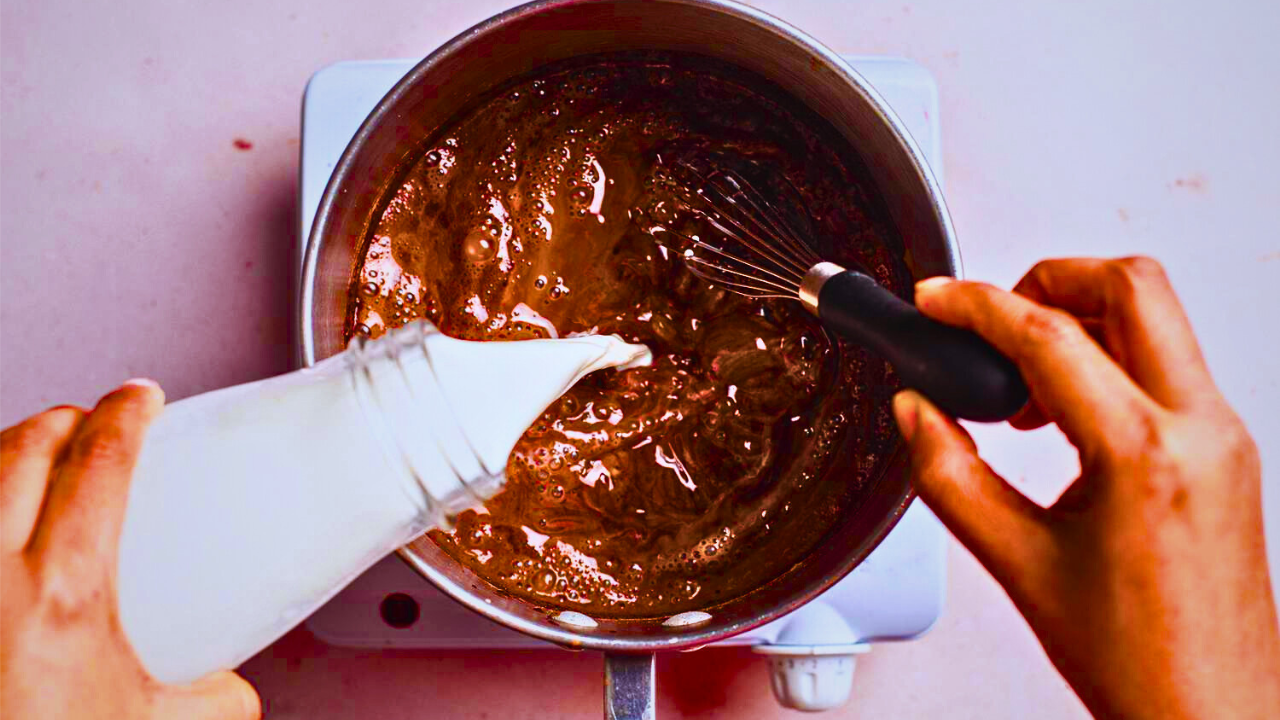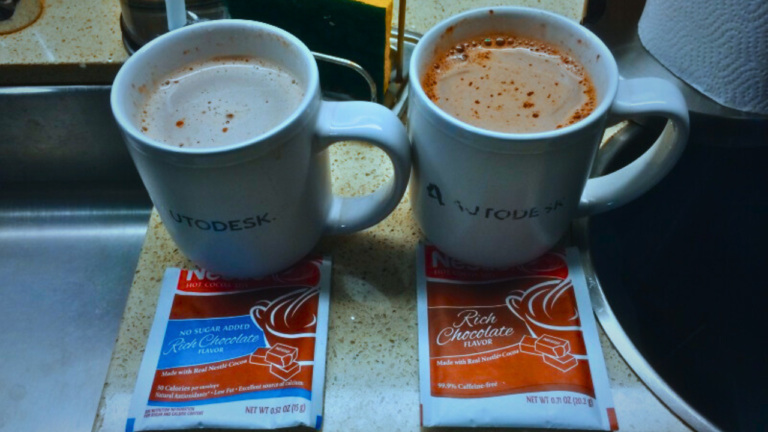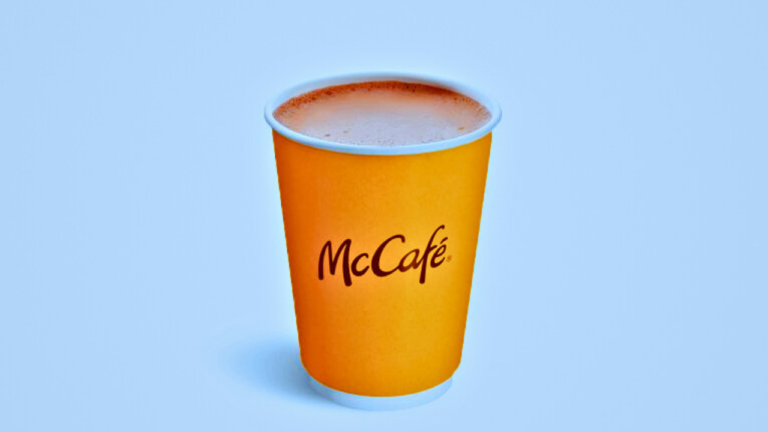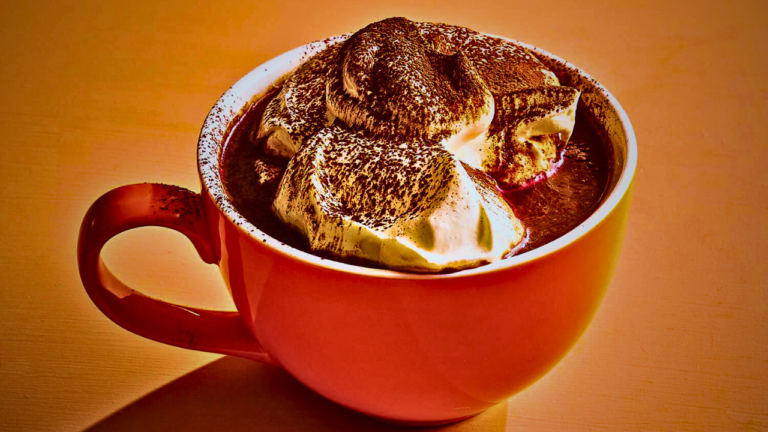How Long Should You Heat Milk for Hot Chocolate?
Achieving the perfect temperature for heating milk is crucial when making hot chocolate that’s creamy, rich, and satisfying. However, knowing exactly how long to heat milk can be a bit of a guessing game. In this guide, we’ll provide you with a simple and effective method for heating milk for hot chocolate, ensuring you get it just right every time.
Time It Right: Start with 1 minute for a standard mug of milk. After this time, stir the milk quickly and check the temperature by dipping a finger in (be cautious). If it needs more warmth, microwave in further 20-second intervals, stirring and checking after each.
By following these steps, you’ll be able to heat your milk to the perfect temperature for hot chocolate, ensuring a deliciously creamy and satisfying drink every time.
Read also: How to Make Hot Chocolate With Chocolate Chips and Milk?
Understanding the Basics:
Before we dive into the specifics of heating milk, it’s essential to understand the science behind it. Milk is a delicate liquid composed primarily of water, proteins, fats, and sugars. When heated, these components interact in complex ways, influencing the taste and texture of hot chocolate.
Optimal Temperature for Heating Milk:
The ideal temperature for heating milk for hot chocolate falls within a specific range. Too hot, and you risk scalding the milk, resulting in a burnt flavor. Too cold, and the chocolate may not fully dissolve, leading to a gritty texture. Aim for a temperature between 140°F and 160°F (60°C and 71°C) for the perfect balance of creaminess and flavor.
Different Methods of Heating Milk:
There are several methods for heating milk, each with its pros and cons. Stovetop heating provides precise control but requires constant monitoring to prevent scorching. Microwave heating offers convenience but can lead to uneven heating if not done carefully. Steam wands and frothers are popular options in coffee shops for achieving velvety texture but may not be accessible to everyone.
How long should you heat milk for hot chocolate?
When it comes to heating milk for hot chocolate, the duration plays a critical role in achieving the perfect balance of creaminess and flavor. Ideally, you should heat the milk gently over low to medium heat, stirring frequently, until it reaches a temperature between 140°F and 160°F (60°C and 71°C).
This process typically takes around 5 to 7 minutes, but it’s essential to monitor the milk closely to prevent overheating or scorching. Heating the milk too quickly or allowing it to boil can alter its taste and texture, resulting in a less-than-ideal hot chocolate experience.
By taking the time to heat the milk slowly and steadily, you can ensure that it is perfectly warmed and ready to blend seamlessly with the chocolate, creating a luxurious and indulgent beverage that’s sure to delight your taste buds.
Techniques for Heating Milk:
When heating milk, the key is to do so gradually to avoid overheating or scalding. Using low to medium heat and stirring frequently can help distribute the heat evenly, ensuring a smooth consistency. Alternatively, if time is of the essence, higher heat can be used, but caution must be exercised to prevent boiling over.
Milk Types and Heating Considerations:
The type of milk used can also affect the heating process. Cow’s milk is the traditional choice and heats well without any special considerations. However, for those with dietary restrictions or preferences, alternatives like almond, soy, or oat milk can be used with slight adjustments to heating times and temperatures.
Tips for Achieving Perfect Hot Chocolate:

Achieving the perfect cup of hot chocolate goes beyond just heating the milk. It’s essential to balance the ratio of milk to chocolate, ensuring a harmonious blend of flavors. Additionally, experimenting with flavor enhancements like vanilla extract, cinnamon, or a pinch of salt can elevate the taste profile.
Read also: Can You Drink Expired Hot Chocolate?
Common Mistakes to Avoid:
To avoid disappointment, it’s crucial to be aware of common mistakes when heating milk for hot chocolate. Overheating can result in a scorched flavor, while underheating may leave the chocolate undissolved. Additionally, improper stirring can lead to lumps or an uneven distribution of heat, affecting the overall quality of the drink.
Is it okay to reheat hot chocolate?
For hot chocolate enthusiasts wondering about reheating their favorite beverage, the answer is a bit nuanced. While it’s technically possible to reheat hot chocolate, it’s not always recommended for optimal taste and texture. Reheating hot chocolate can cause it to become overly thick or grainy, as the cocoa particles may not fully dissolve upon reheating.
Additionally, repeated heating and cooling cycles can lead to flavor degradation, resulting in a less satisfying drink. However, if you find yourself with leftover hot chocolate that you’d like to enjoy later, there are ways to reheat it gently to minimize texture and flavor changes. Simply place the hot chocolate in a saucepan over low heat, stirring constantly until warmed through.
Alternatively, you can use a microwave on low power, heating in short intervals and stirring in between to ensure even heating. Ultimately, while reheating hot chocolate is possible, it’s best enjoyed fresh for the most delicious experience.
Conclusion
In conclusion, the perfect cup of hot chocolate begins with properly heating the milk. By understanding the optimal temperature range, choosing the right method, and employing the correct techniques, you can elevate your hot chocolate game to new heights.
Experiment with different milk types, flavors, and heating methods to discover your signature recipe. So, the next time you crave a comforting cup of hot chocolate, you’ll know exactly how long to heat the milk for that perfect indulgence.
FAQs
Is it necessary to heat the milk before making hot chocolate?
Heating the milk before making hot chocolate is essential for achieving the perfect texture and temperature. Cold milk can result in a lukewarm or unevenly heated beverage, while hot milk ensures that the chocolate melts evenly and blends smoothly.
Can I heat milk in the microwave for hot chocolate?
Yes, heating milk in the microwave is a quick and convenient method for making hot chocolate. Simply pour the desired amount of milk into a microwave-safe container and heat on high for 1 to 2 minutes, or until the milk reaches the desired temperature.
How can I prevent milk from scorching when heating it for hot chocolate?
To prevent milk from scorching when heating it for hot chocolate, use gentle heat and stir the milk frequently to distribute the heat evenly. Avoid letting the milk come to a boil, as this can cause it to scorch and develop a burnt flavor.
What is the best type of milk to use for hot chocolate?
The best type of milk to use for hot chocolate depends on personal preference and dietary restrictions. Whole milk is traditional and provides a rich, creamy texture, while almond milk, oat milk, and coconut milk offer delicious vegan alternatives.
How long should I heat the milk for hot chocolate on the stovetop?
When preparing hot chocolate on the stovetop, it’s best to heat the milk for hot chocolate over medium heat for approximately 5-7 minutes. Remember to stir occasionally to prevent scorching.
Can I use milk directly from the fridge for my hot chocolate recipe?
While you can use cold milk for your hot chocolate recipe, it’s recommended to heat it slowly to ensure a creamy and well-incorporated hot chocolate. Heating it up before adding it to the cocoa mixture can enhance the flavor and texture.
What’s the best way to heat milk for hot chocolate in the microwave?
If you prefer using the microwave method, place your milk in a microwave-safe mug and heat it on high for about 1-2 minutes, stopping to stir every 30 seconds. Be cautious not to let the milk reach a boiling point.
Should I heat the milk before or after adding the cocoa powder to my hot cocoa?
For a well-blended and delicious hot chocolate, it’s recommended to heat the milk first until it’s steamy, and then slowly whisk in the cocoa powder until smooth and creamy.

Welcome to the delightful world of “Hot Chocolate Brew,” where the art of crafting and savoring hot chocolate takes center stage. I am Smith Karen, your guide on this indulgent journey through the rich and velvety universe of hot chocolate. As a passionate enthusiast of this comforting elixir, I am thrilled to share my insights, recipes, and experiences with fellow connoisseurs and those eager to explore the diverse realm of hot chocolate.
At “Hot Chocolate Brew,” we believe that a steaming cup of cocoa has the power to warm not just your body but also your soul. Whether you’re a seasoned hot chocolate aficionado or a newcomer to the world of cocoa delights, our aim is to provide you with a delectable blend of inspiration, knowledge, and mouthwatering recipes.
Join me in uncovering the secrets behind the perfect cup of hot chocolate, from selecting the finest ingredients to experimenting with unique flavor combinations. From classic recipes that evoke nostalgic warmth to innovative twists that will surprise your taste buds, “Hot Chocolate Brew” is your go-to resource for all things cocoa-related.
Prepare to embark on a journey of indulgence, as we explore the nuances of this timeless beverage together. Get ready to elevate your hot chocolate experience and make every sip a moment of pure, chocolaty bliss. Cheers to the joyous world of “Hot Chocolate Brew”!







